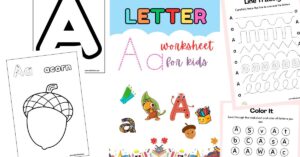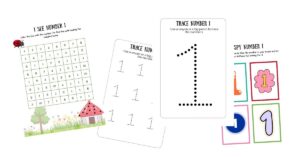Sensory books are great for children because they stimulate their senses. I’ve seen kids use these books to enhance their knowledge of everything around them. Of course, babies start by learning how to touch and see before they can read. But that shouldn’t stop them from experiencing different worlds through books.
Sensory books help children develop their vocabulary faster and associate the words and letters with what you say. Kids also improve their motor skills, creativity, and problem-solving skills with sensory books.
Like most parents, you probably grew up around traditional books. Although they are good, I love sensory books more because they give a more interactive experience. They are also perfect for kids with learning challenges. Let’s explore how sensory books can enhance your kid’s development and learning. But first,
- What Are Sensory Books?
- What Unique Features Do Sensory Books Have?
- The Benefits of Sensory Books
- 1. Sensory Books Stimulate a Child’s Senses
- 2. Sensory Books Promote Motor Skills
- 3. They Boost Creativity and Curiosity
- 4. Sensory Books Exercise the Brain and Encourage Understanding
- 5. They Boost Sitting Tolerance
- 6. They Help Learn Languages
- 7. Sensory Books Promote Color, Shape, and Size Recognition
- 8. They Encourage Problem Solving
What Are Sensory Books?
Sensory books, also called soft or quiet books incorporate different features, where babies learn through sounds, touch, sight, and sometimes smell. All these elements are brought together to tell a story.
Unlike traditional books, sensory books don’t rely solely on reading. So, they are perfect for children who don’t know how to read yet or have difficulty reading. As such, you should not worry about your kids lagging in school.
If the sensory book is about animals, every detail is enhanced. For example, a dog’s fur feels like actual fur upon touch. Such features make babies more in touch with the world around them from a very young age.
Sensory books are available as:
- Bath Books
These are touch-and-feel books. They allow your child to get a full experience by touching and experiencing the book without worrying about it getting wet. Your kids also learn a lot about being clean from the photos.
- Pop-up Books
Your kids will love these books because they pop up when opened. The page contents rise once your young one opens the book, giving a 3D effect.
- Song Books
These books make reading interesting since they feature nursery rhymes and other songs once opened. They have sensory items to delight your young ones’ senses, helping them develop speech and learn more.
- Touch and Feel Books
Touch and feel panels are the primary features of these books. They help kids learn words through the texture they feel. Kids relate what they feel with the word that is described. Therefore, they learn words much faster.
What Unique Features Do Sensory Books Have?
Sensory books are like adventure books. Every page has unique characteristics, allowing kids to have an interactive experience while flipping through. Sensory books have more than simple pictures and words. The pictures are in 3D to enhance the touch sensation. Other sensory books, such as song books have sounds. So, a child can press different buttons to hear rhymes or animal sounds.
Another unique feature of sensory books is the attractive and colorful detailing. The aim is to attract and keep kids’ attention. To enhance the experience, some of these books also have smells. All these elements aim to tell stories in an unconventional but interesting way that’s easy for kids to understand.
The Benefits of Sensory Books
You want children to love books. Therefore, introducing them to sensory books early enough boosts their interest in reading. The advantages of sensory books for kids are endless. Experts encourage parents and teachers to use these books to boost brain and physical development in kids.
Here are reasons why you should get sensory books for your kids:
1. Sensory Books Stimulate a Child’s Senses
Sensory books provide multi-sense stimulation. Although there are different types available in the market, sensory books have visual, auditory, and tactile inputs. So, during one reading session, your child experiences multiple stimulations at a go.
Introducing sensory books to kids at the recommended age contributes to appropriate stimulation. In addition, they enhance a child’s attention and tolerance to stimuli. Kids with autism and ADHD (attention deficit hyperactivity disorder) experience hypo and hypersensitivity to stimuli. Therefore, sensory books are perfect for them.
2. Sensory Books Promote Motor Skills
The materials that make sensory books make them easy to work with. Kids from young ages can flip the pages and touch the elements on each page. With time, these books encourage the development of manual skills and coordination. Manipulating interactive elements in sensory books also encourage skeletal and muscular movements. With time, you’ll notice that your eight-month-old can flip pages without struggling.
3. They Boost Creativity and Curiosity
Sensory books have visually appealing characters, texts, and scenes. So, they’ll attract your kid’s attention once introduced. Moreover, the interactive elements encourage your kid to be adventurous. Children also explore different ways to work with the elements of the book. Every page presents a different challenge and a new opportunity for creativity.
4. Sensory Books Exercise the Brain and Encourage Understanding
Traditional books are primarily made of words. On the other hand, sensory books have sounds, objects, images, and textures that positively affect a child’s memory. When a child sees animals in the book, they relate them to animals they see around them. Also, kids relate the sounds they hear to the words they touch on the sensory books.
5. They Boost Sitting Tolerance
Young kids love moving around, and most have short attention spans. If you have a one or two-year-old, you understand how difficult it is to get them to sit for long periods. With sensory books, children are hooked and tend to sit down for longer, flipping the pages and exploring the book’s contents. By the time your kid goes to school, they will have formed a habit of sitting through lessons and activities.
6. They Help Learn Languages
Sensory books have letters and words made so that kids can touch and feel them. This enables them to expand their vocabulary since they become familiar with letters and words. Also, teaching children to call out words while they touch them on their books assists them in learning new languages.
7. Sensory Books Promote Color, Shape, and Size Recognition
With sensory books, children don’t just stare at the pages. Instead, they interact by touching the different shapes and sizes. Feeling all the contours and seeing the different colors promotes recognition in kids. Therefore, if they see the same shapes or colors elsewhere, they can easily identify them.
8. They Encourage Problem Solving
Sensory books give kids a sense of independence since they explore them at their own pace. In the process, they overcome hurdles and generate ideas independently. As such, their problem-solving abilities develop. Some advanced sensory books also encourage kids to understand mathematical concepts, which is a huge plus. Don’t feel bad about stepping aside and letting your child learn on their own.
The best sensory books are easy to handle, indestructible, involving, and interesting. Sensory books are important in a world where technology quickly replaces interactive play. Instead of getting a gadget for kids, make or buy sensory books for them. They are simpler and more beneficial for your child’s brain development.




